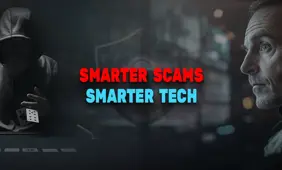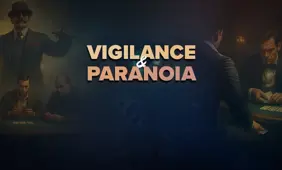Shuffle Tracking for Beginners – Not So Lost in the Shuffle

Casinos spend millions on protecting their games, but often, cheaters and advantage players find the greatest weakness at the house’s first line of defense. With a thorough understanding of how does shuffle tracking work and the elusive nature of true randomness, all a motivated player needs to do is pay close attention to secure an unbeatable edge.
The Rise of Shuffle Tracking
Magician Charles Jordan is credited as the little-known Godfather of shuffle tracking. In the early 1900s, he developed a principle that allowed for a staggering magic effect that could even be performed through the mail system.
The performer could mail a brand-new deck of cards to a friend with a letter giving clear instructions for the recipient to do the following:
Remove the deck from the box and place it face down on the table, ready to be shuffled.
Give it a complete cut followed by a riffle shuffle.
Again, cut the deck, complete the cut, then give the deck another riffle shuffle followed by another complete cut.
The top card is certainly - at this point - a random card.
Look at this card, remember and write it down somewhere so you won’t forget.
Replace that card face down on top of the deck, give the deck another complete cut, and then another riffle shuffle.
Ensure the deck is perfectly squared, insert it back into the card box, tape it, then mail it back to me at your earliest convenience.
Shortly after returning the deck, the recipient would receive another letter from his friend containing a single card - the one he selected and then shuffled back into the deck.
Since the invention of this basic principle, magicians have taken it much further and been able to perform miracles under seemingly impossible conditions while relying on aspects of that original Charles Jordan principle to track down selected cards or backtrack sequences and learn seemingly lost information.
Eventually, this principle was applied to card games where observant players could secure an advantage merely by watching, for example, a blackjack shuffle, then estimating the final position of known cards.
How Do Casinos Shuffle Cards
In the game of three-card brag that I learned in pubs in Scotland during the late 1980s, players would not shuffle the deck until a three-of-a-kind turned up! This left the game open to easy shuffle tracking by smarter players.
One old-timer told me he would throw away a winning three-card hand to preserve a known order if he could mentally predict a better situation to win more money in the next round.
In most games of chance, the cards are routinely shuffled between rounds, but if that shuffle does not sufficiently randomize the order of those cards, watchful players can track or predict the final outcome before a single card is even mixed.
In the mid-90s, I was shown a covert video clip of a new shuffling machine in a US casino that turned the casino shuffle procedure into a robotic flourish of sorts. Two halves of an eight-deck shoe were placed into transparent hoppers, one beside the other, each then ejected from the bottom by a pair of rollers that pulled cards above, interlacing them with cards from the other hopper. In case you ever wondered what cards are in after being shuffled – it’s the third hopper below the two.
Indeed, it made for an entertaining procedure but was entirely predictable since cards from one half of the deck were very neatly being dovetailed with cards from the other half, and anyone who could memorize the order as the previous round was dealt and discarded could easily predict how to win an awful lot of money after those same cards were supposedly mixed. The biggest problem for advantage players with that machine was finding an open seat with so many people fighting to take that casino to the cleaners.
The Way to Track a Hand Shuffled Game
Hand-shuffled games can be equally vulnerable to shuffle tracking depending on the shuffle procedure being taught to dealers. Often, a casino will employ a shuffle designed in-house by so-called experts who have no idea how to map the outcome. Modern - smarter - casinos rely on properly tested shuffling procedures that frustrate most casino tracking efforts, but in the bad/good old days, a weak shuffle was not so hard to find.
In Glasgow in the 1990s and early 2000s, between poker sessions, I would watch dealers shuffle the cards and quickly recognized that their shuffle was too short and very easy to predict. I shared this information with an associate who was based overseas, and within a week, he flew thousands of miles to see that shuffle for himself before organizing a team to take full advantage of the opportunity.
The problem was that as soon as he or another member of this team of newcomers sat down, the weak shuffle was replaced by a longer, more complex, and harder to predict procedure. It turned out that dealers would use the short shuffle with familiar locals to get more hands dealt in the hour (and more money in the casino’s pocket) but change up the shuffle if unknown players entered the game.
The solution was to play low stakes for several weeks until the dealer was comfortable, and once he or she started to short-shuffle the deck, our “big player” would step in, follow our cues based on memorized sequences from the previous round and win. By the time the cut card came out, and the longer shuffle was returned, our big player would wander off and only return once we had another predictable shoe in play.
In fact, we soon learned that if the big player left the table before the shuffle happened, the dealer would often retain the weaker short shuffle, and we would have two rounds of play to take advantage of memorized conditions.
A Beginner’s Guide
Here’s a simple way to understand the benefits of shuffle tracking blackjack, or any other game of chance for that matter. We’ll use poker as an example.
Find a deck of cards and place four aces on top of the deck.
Give the deck a relatively clean riffle shuffle (by that, I mean make sure you cut two equal halves, and interlace the cards evenly without too many big clumps).
Repeat this shuffle.
Now take twenty cards from the bottom of the deck (count them one at a time) and place those on top of the deck - this emulates a predicted or estimated cut where players can guess how many cards are above a known sequence.
Deal ten hands of Hold ‘Em, burn a card, deal the flop, then the turn, and then the river.
Are there any aces on the board?
If there were, you could bluff (read our article on how to pull off a bluff) that you have one or more of the other aces with complete confidence since you know that you won’t run into another ace. This is because you know that the aces were almost certainly distributed in the upper two-thirds of the deck before cutting those twenty cards from bottom to top.
You know this because you knew the aces were all on top at the beginning and that the following cuts and shuffles were even and clean and would only distribute those aces with the cards nearest the top at the end of each shuffle.
Three or more shuffles might ruin this degree of certainty, but don’t be fooled into thinking more shuffles is always a sure way to randomize a deck of cards - more on that another time - but under these conditions, you can know a lot about where the aces might be and make playing decisions based on that knowledge.
Of course, there are much more sophisticated ways to employ information from a trackable shuffle, and I’ll discuss that - and the methods used to memorize entire eight-deck shoes under fire - in another article.
Read more:





Review this Blog
Leave a Comment
User Comments
comments for Shuffle Tracking for Beginners – Not So Lost in the Shuffle